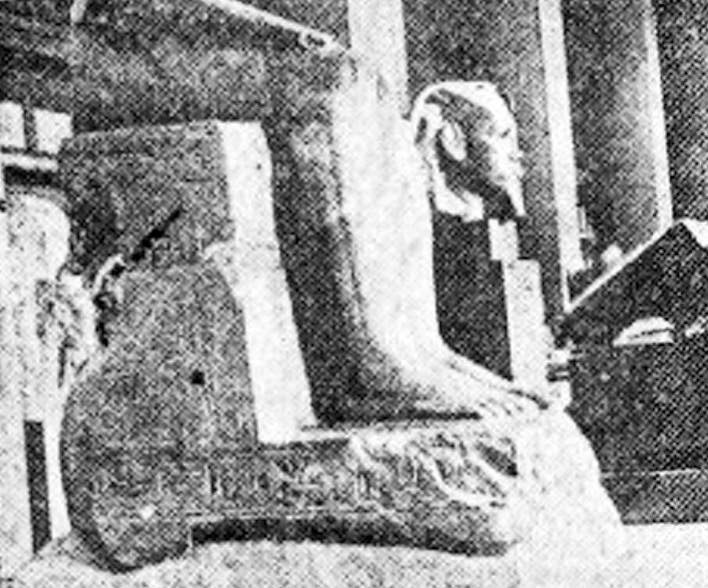
1922 was the year of great ancient Egyptian discoveries. It was also the year when Egypt decided to take a step towards preserving its incredible heritage for its own country to share with the world, instead of allowing other countries to step in and whisk away the treasures.

Gigantic Obelisk Found At Assuan Heaviest Known
Weighs 1,168 Tons
Reveals Ingenuity of Egypt’s Engineers 4,000 Years Ago
Luxor, Egypt, Dec. 27. — Discovery of a gigantic obelisk at Assuan on the Nile has been announced recently in the continental newspapers, and though the find is not as important as that of the Tutankhamen tomb it is of great interest.
The monument, which is absolutely unique, is a great acquisition, according to Capt. Engleback, chief inspector of antiquities in the department of Upper Egypt.
Throughout the ages the top portion of the immense obelisk in granite on a hill in Assuan was known, as it was exposed to view for about twenty-two meters of its length sloping into a vast chiphead. The trouble had never been taken away the debris until when in the winter of 1920 King Feud, who takes a real interest in antiquities, visited this quarry and expressed a desire to see the obelisk completely exposed to view. This was done by the antiquities department and a complete report will be published by that department early in the new year.

The obelisk, which is still attached to its granite bed, is 133 feet long, 14 feet wide at the base and tapers to 8 feet at the small end. The weight, had the obelisk been extracted, would be 1,168 tons, which is triple the weight of the largest obelisk known to have been erected — that of Queen Hatshesuet at Karnak in Upper Egypt.
Capt. Endelback acknowledged that it seems incredible, but added that the ancient Egyptian engineers moved heavier and more awkward blocks, such as the Colossi at Thebes, which were transported far from the South, while the huge broken Colossus of Rameses II in the Ramesseum, which was brought to Assuan, must have weighed almost as much.
This obelisk now unearthed at Assuan was cut from the parent rock by a deep, narrow trench running around it. There is every reason to suppose the trench was bashed out by blows from balls of dolerite, which is a tough greenish stone allied to diorite, of which hundreds were found in the course of the excavating of this obelisk.
Thus they had a tool, durable and efficient, but easily lost. By experiment it can be demonstrated that the work with such tools would have taken about a year. Presumably each dolerite was attached to a hammer which was lifted and bashed down by several workmen under the supervision of foremen with whips.
When the work was about half finished it was abandoned owing to fissures in the granite, which made it unable to stand the tremendous strains due to the great length of the obelisk. It was not abandoned without a most searching examination and it was finally realized that all the work of bashing out the obelisk was useless as it was manifestly impossible to erect it.
It is apparent from different measurements on the granite that several attempts were made at different periods to complete it before the final rejection of the idea, but as it was not the habit of the ancient Egyptians to associate themselves with failure there is no evidence as to which Kings ordered the respective attempts.
This destroys the historical value, but the obelisk is most interesting to engineers as showing how the ancient Egyptians, who were ignorants of all tools except rollers and levers, yet were able to move a brittle mass weighing 1,168 tons.
Source: The Evening World (New York City, NY newspaper). December 27, 1922.

